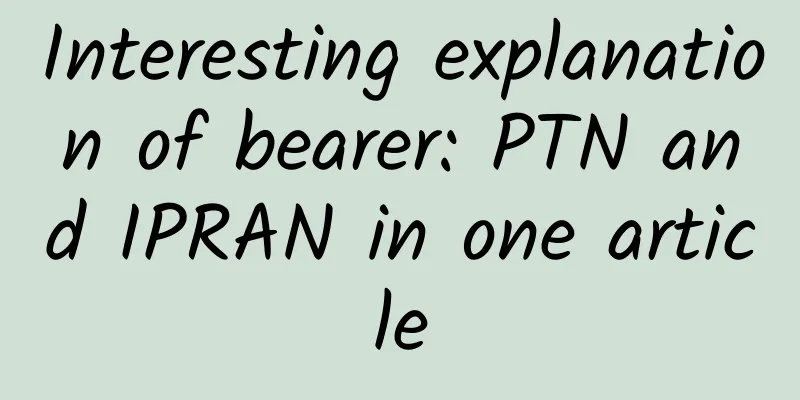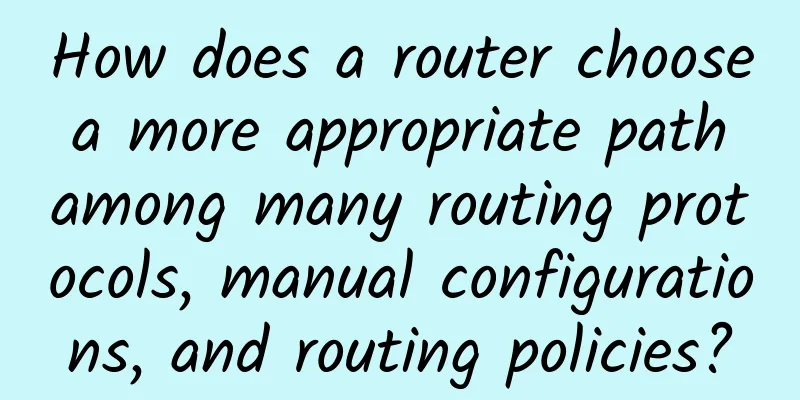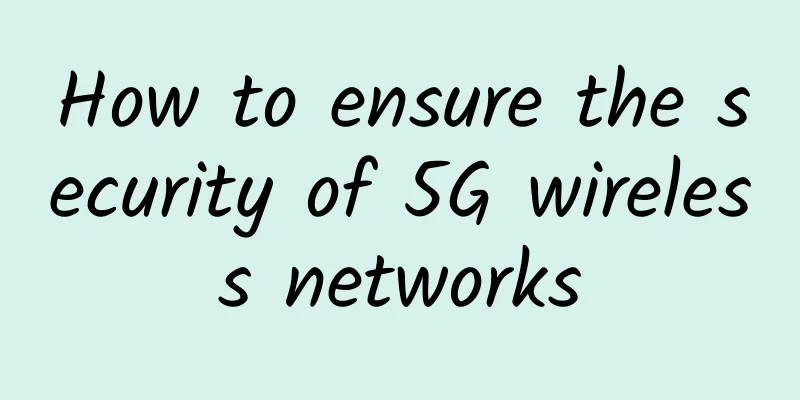Interesting explanation of bearer: PTN and IPRAN in one article

The "old-fashioned" old boss—SDHThe transmission gang, led by its old boss SDH (Synchronous Digital Hierarchy), was once very prosperous. When the old boss SDH founded the group, he set a rule: if goods want to be transported, they must be in a "block structure" and must be of a "standard" size, and vehicles must be strictly regulated according to the standard size of the goods. Only with such rules can the efficiency of transportation be maximized. However, the times are different now! In the era of the Internet of Everything, the demand for bandwidth has increased dramatically. Therefore, Ethernet is popular, and its simplicity, freedom, and best efforts are widely welcomed. However, the IP of Ethernet is large or small (IP frame length is variable, some are small, some are large), which does not meet the strict requirements of SDH for goods, making SDH very difficult to handle. In order to meet business needs, the old leader SDH also had to transport IP goods, but it was very incapable of doing so... If the amount of IP cargo carried by SDH is relatively small, the problem can be solved by renovating the vehicles to reserve a few seats for IP. However, if IP cargo accounts for more than half of the cargo, the cost of renovating the vehicles will be too high and the cost will not be worth it. In order to transport IP cargo of various sizes faster and more accurately, the old boss had to consider seeking help from his two sons, PTN (Packet Transport Network) and IPRAN (IP Radio Access Network). Flexible Successors—PTN and IPRANIn order to achieve efficient transmission of various goods, PTN/IPRAN provides targeted transportation tools with different carrying capacities, using trains to transport oversized items, cars to transport medium and large items, and bicycles to transport small items. PTN/IPRAN transport mode For example, use a larger bandwidth to transmit video files, a slightly smaller bandwidth to transmit audio files, and a very small bandwidth to transmit text files. This maximizes the use of transport space and effectively solves the dilemma of the old SDH. The transmission principle of PTN/IPRAN technology is: various goods are disguised and then transported into one's own territory. After the goods leave the territory, the disguise is removed and restored to their original appearance. The implementation of PTN/IPRAN technology is based on two magic weapons:
Disguise "PWE3": I don't want to be rich but I won't build roadsIn traditional technology, operators need to build different transmission networks for different types of businesses, just like transportation companies need to build dedicated railway networks for oversized items, highway networks for medium and large items, and road networks for small items, and different networks are not interoperable. After adopting PWE3 technology, an end-to-end path is established between the service sending end and the receiving end. When sending different types of services, the path simulates the transmission of the service through PWE3 technology, simulating the railway network for super-large items, the highway network for medium-sized items, and the road network for small items. It is no longer necessary to establish dedicated networks for different services. The service itself will not feel the network changes. When the network types of the sender and receiver are different, transmission is achieved through PWE3 simulation, and no special processing is required for different access methods. MPLS: Labeling is the key to successThe core technology of MPLS is to distribute the same label to the data packets with the same destination and take the same path, thus opening up a virtual "road" in the IP network, turning the IP network from a non-connected network into a connected network. As the famous saying goes, "There are no roads in the world, but when more people walk on them, they become roads." This greatly improves the forwarding efficiency of routing and makes data transmission faster. As shown in the figure below, when the service needs to be transmitted from the sending end to the receiving end, the double-layer label switching process will be completed through the following steps. 1. When operator device 1 (Station A) receives the service from the sender, it first adds a label to mark the service (lipstick gift box), then adds its own label (Station A), and then sends the service to the intermediate device (Station B). 2. The intermediate device first removes the outer label (Station A), adds its own label (Station B), and then sends the service to operator device 2 (Station C). 3. Operator equipment 2 (station C) removes the outer label and delivers the service directly to the recipient. 4. When the receiving end receives the service with a layer of packaging (lipstick gift box), it removes the packaging and successfully receives the service. In this way, customers only need to use a shorter path label (such as: Station A-Station B-Station C) instead of a longer network address to forward data packets from one network node to the next network node, thus avoiding the complex query process in the routing table. Who will inherit the position of gang leader?The business capabilities of PTN and IPRAN are highly recognized in the industry, but there is always a dispute over which one is more capable: Q. PTN only supports L2VPN, while IPRAN supports L3VPN. Is IPRAN more powerful than PTN? A: Not entirely true! Driven by LTE services, PTN has also evolved to support L3VPN functions, but there are indeed differences in the focus of the two.
Q. I understand! IPRAN devices do not support network management operations! A: Wrong! After years of vigorous research and development, both PTN and IPRAN equipment can provide powerful graphical network management operation and maintenance interfaces. There is no essential difference between the two. Q. PTN and IPRAN are actually the same technology, just a change of name. A: Wrong! Although PTN and IPRAN are similar in many aspects, such as interface, single-layer function, QoS function, OAM mechanism, etc., they are also very different in network protection mechanism and network deployment. Network protection mechanism
Network deployment
Q. What are the essential differences between PTN and IPRAN? A: The two brothers have different personalities and fundamentally different ways of managing transmission equipment. PTN is equivalent to a centralized system, while IPRAN is equivalent to a democratic republic.
Who will inherit the position of leader of the Packet Transmission Gang? As for the position of gang leader...for the Transmission Gang, any technology that can meet business requirements is good technology. The two brothers will gradually complete integration in the competition and carry forward the Transmission Gang. |
<<: After 4 years, 5G has blossomed
>>: The secrets of Netty network programming, just read this one
Recommend
Huawei Cloud Solution Selection Competition and Cloud Migration Competition are in hot selection, looking for excellent solutions and talents
[51CTO.com original article] At the beginning of ...
How to explain network engineering technologies such as STP, HSRP, etc. in a simple and understandable way?
During an interview, for example, I was asked abo...
5G drives growth in rising private mobile network market
The use of dedicated mobile networks based on LTE...
WiFi is disliked by the EU and 5G may be selected as the communication standard for Internet of Vehicles
EU member states recently voted on a plan to adop...
Operators opening up roaming on different networks can accelerate the withdrawal of 3G networks! Netizens: The billing method has been thought out
In March 2020, the Ministry of Industry and Infor...
RAKsmart March Promotion: Popular VPS starting at $1.99/month, E3-1230 dedicated server only $30/month
RAKsmart has launched a promotional event for Mar...
Tencent Cloud lightweight application server 1 core 1G 3M annual payment starts from 128 yuan, 1 core 1G 30M Hong Kong cloud server 24 yuan per month
Tencent Cloud's lightweight application serve...
The pain of 5G mobile phone "weight loss": What is the difficulty in lightweight design?
"The return of thin and light design is part...
How to unleash greater potential of new infrastructure
Recently, several domestic mobile communication o...
Qualcomm, Ericsson and OPPO achieve Europe's first commercial 5G SA network
According to foreign media reports, OPPO, Ericsso...
HTTP connection management diagram
[[414965]] Hey guys, this is programmer cxuan, we...
Mobile networks want to kill WiFi, but it won’t work in China
According to a recent report by OpenSignal Mobile...
WiFi speed is slow, try these 8 simple tips
Slow WiFi speed is always a headache, especially ...
The three kings of wireless communications, who can manage tens of billions of IoT devices?
According to the "2018-2023 China Internet o...
How to use SSL/TLS in Node.js
This article is reprinted from the WeChat public ...









